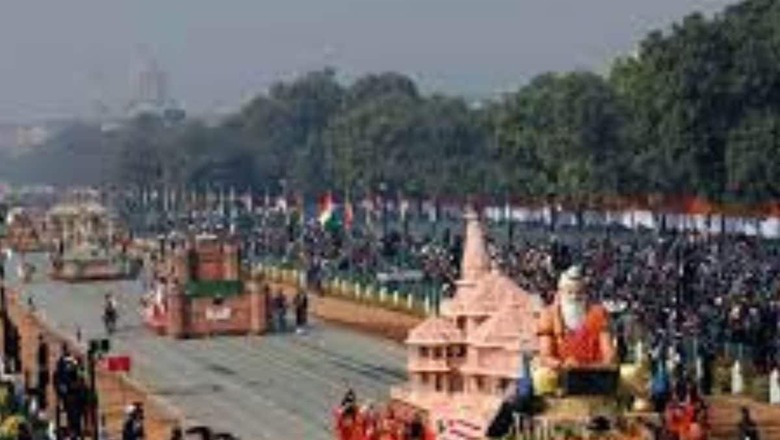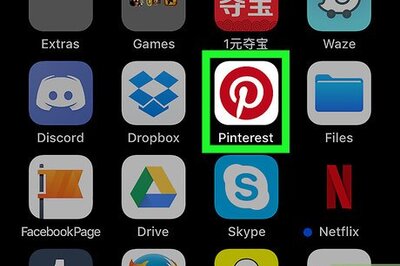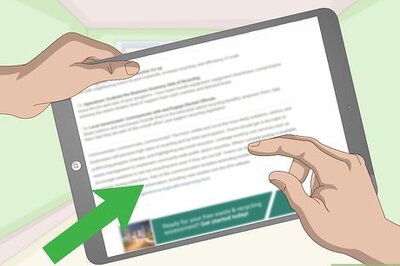
views
Tableaux Politics is back! After Punjab, West Bengal, and Delhi, now it’s Karnataka’s tableaux design proposals for the Republic Day parade in New Delhi that have been rejected.
The issue has taken a political tone with Karnataka Chief Minister Siddaramaiah alleging that the “Central government is constantly attacking Kannadigas with political malice”.
Siddaramaiah called it an insult meted out by the Centre to seven crore Kannadigas by denying the opportunity for the state’s tableaux to be included in the Republic Day parade.
Siddaramaiah tweeted about how the BJP-led Central government had initially rejected Karnataka’s tableaux last year. “They later permitted keeping Karnataka elections in mind. This time, the central government has again continued its trend of insulting Kannadigas,” the CM said in his statement.
According to the Karnataka government, several tableau proposals were sent from the state to the committee in charge of selection, but all the proposals were rejected.
The other states that failed to make it to the final cut were Punjab, Delhi, and West Bengal — all of which are not ruled by BJP. The chief ministers of the states have also written to the Centre seeking reasons why their designs have been rejected.
Karnataka has submitted seven tableau designs — two of which depict the contribution of development and democracy of Nalvadi Krishnaraja Wadiyar, the erstwhile King of Mysore. Another design submitted was that of Brand Bengaluru, which also features Kempegowda, the founder of the ‘Silicon capital of India’. The fourth design that was submitted depicts the cultural ethos of the state with traditional folk dances like the Dollu Kunitha, Yakshagana, Bhoota Kola (popularised by the movie ‘Kantara’) among others.
“A proposal showcasing the Congress’ five guarantees, Bengaluru’s growth spurt was also sent. That too got rejected,” said a source in the Chief Minister’s Office to News18.
The sixth design proposal included showcasing all GI-tagged products of the state — from Channapatna toys, Navalgund Durries, Bidriware from Bidar. A tableau design depicting Karnataka’s floral bounty and culture was also submitted.
Siddaramaiah said that “Kannadigas are already enraged by the continuous injustice from the Central government towards Kannada and Karnataka. The Central government should not test their patience. It is not too late yet, the Central government should immediately correct its mistake and rectify the injustice done to Karnataka by allowing us to participate in the tableau presentation at the prestigious Republic Day parade.”
Submit Better Designs: BJP
Leader of Opposition and former deputy chief minister R Ashoka countered Siddaramaiah’s allegations. Speaking to News18, he said the proposal may have been rejected as “it may not have been good enough or of the quality that was expected of a natural tableau.
“The selection is done by a committee which determines and selects the best designs. All states may not get a chance every time. The theme or the design must be really good and those that make it to the cut. The onus is on the present (Congress) government to send a design they cannot say no to. Isn’t their fault that it may not have been good enough,” Ashoka contended.
“A tableau from Karnataka would be a matter of pride. I suggest they come up with a better design and submit again, rather than play petty politics like this,” Ashoka told News18.
The ‘Rejected’ Designs
While the Centre is yet to release its final list, the politics around the tableaux parade continues to rage on. According to the MyGov website, 331 designs have been submitted and are under consideration. This year’s theme revolves around ‘Viksit Bharat’ (Developed India) and ‘Bharat-Loktantra ki Matra’ (India-Mother of Democracy).
Punjab, Delhi and West Bengal also have submitted seven tableau design proposals each. Delhi, ruled by the Aam Aadmi Party, has submitted four sketches, including one that showcases its ‘mohalla’ clinics and education services.
West Bengal proposed two designs exhibiting its cultural heritage and the Kanyashree scheme that seeks to improve the status of girls. The West Bengal submitted two designs — one that focused on the Kanyashree scheme, Kanyashree University, and the other on Bengal’s famous traditional dances and culture.
Punjab, like Karnataka, submitted seven designs, which included showcasing Mai Bhago, another one featuring the contributions and sacrifices made by freedom fighters such as Bhagat Singh and another showcasing Punjab’s rich culture.
Last year, the theme that dominated the tableaux of various states including Kerala, Karnataka, Tamil Nadu, Maharashtra, and Tripura at the Republic Day parade was Nari Shakti.
Of the 17 states and union territories tableaux showcased at the parade in 2023, Uttarakhand’s tableau based on the theme ‘Manaskhand’ was judged the best.
In 2022, Kerala’s proposal of a tableaux presenting social reformer and spiritual leader Sree Narayana Guru was rejected. This led to a major outcry. It was said that the defence ministry, in charge of the parade, wanted a tableau depicting Adi Sankaracharya, the founder of Advaita philosophy, but Kerala insisted Narayan Guru. The standoff led to Kerala being rejected.
Selection Process
The Ministry of Defence (MoD) is responsible for conducting the parade and coordinating arrangements with states and other agencies. Preparations for the ceremony begin months in advance. This process includes the selection and shortlisting of tableaux.
The ministry forms a committee comprising experts in arts, culture, painting, sculpture, music, architecture, choreography, and related fields to review proposals.
After approval, participants present a three-dimensional model to the panel, which undergoes expert scrutiny for the final selection. Only shortlisted candidates proceed to the next round.
The proposed design or sketch is expected to be clear, straightforward, lively, easily comprehensible, and devoid of statistical data and superfluous details. The ministry issues guidelines highlighting the importance of incorporating eco-friendly materials and technology. Logos are restricted; only the state/UT’s name, which can be in Hindi on the front, English on the back, and in the regional language on the sides is allowed.


















Comments
0 comment